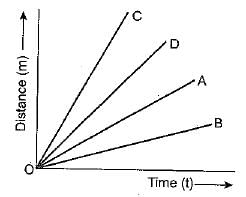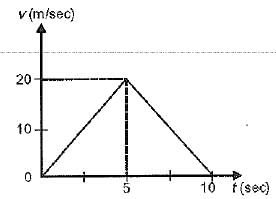Class 9 Exam > Class 9 Tests > Science Class 9 > Lakhmir Singh & Manjit Kaur Test: Motion - Class 9 MCQ
Lakhmir Singh & Manjit Kaur Test: Motion - Class 9 MCQ
Test Description
10 Questions MCQ Test Science Class 9 - Lakhmir Singh & Manjit Kaur Test: Motion
Lakhmir Singh & Manjit Kaur Test: Motion for Class 9 2025 is part of Science Class 9 preparation. The Lakhmir Singh & Manjit Kaur Test: Motion questions and answers have been
prepared according to the Class 9 exam syllabus.The Lakhmir Singh & Manjit Kaur Test: Motion MCQs are made for Class 9 2025 Exam. Find important
definitions, questions, notes, meanings, examples, exercises, MCQs and online tests for Lakhmir Singh & Manjit Kaur Test: Motion below.
Solutions of Lakhmir Singh & Manjit Kaur Test: Motion questions in English are available as part of our Science Class 9 for Class 9 & Lakhmir Singh & Manjit Kaur Test: Motion solutions in
Hindi for Science Class 9 course. Download more important topics, notes, lectures and mock
test series for Class 9 Exam by signing up for free. Attempt Lakhmir Singh & Manjit Kaur Test: Motion | 10 questions in 20 minutes | Mock test for Class 9 preparation | Free important questions MCQ to study Science Class 9 for Class 9 Exam | Download free PDF with solutions
Detailed Solution for Lakhmir Singh & Manjit Kaur Test: Motion - Question 1
Detailed Solution for Lakhmir Singh & Manjit Kaur Test: Motion - Question 2
Detailed Solution for Lakhmir Singh & Manjit Kaur Test: Motion - Question 3
Lakhmir Singh & Manjit Kaur Test: Motion - Question 4
If the displacement-time graph of a particle is parallel to the time axis, the velocity of the particle is
Detailed Solution for Lakhmir Singh & Manjit Kaur Test: Motion - Question 4
Lakhmir Singh & Manjit Kaur Test: Motion - Question 5
The numerical ratio of displacement to distance for a moving object is
Detailed Solution for Lakhmir Singh & Manjit Kaur Test: Motion - Question 5
Lakhmir Singh & Manjit Kaur Test: Motion - Question 6
A body starting at a point, say A, reaches, say B, ahead in a straight line and returns back to A. Then there is
Detailed Solution for Lakhmir Singh & Manjit Kaur Test: Motion - Question 6
Lakhmir Singh & Manjit Kaur Test: Motion - Question 7
What does a steep slope on a distance-time graph indicate?
Detailed Solution for Lakhmir Singh & Manjit Kaur Test: Motion - Question 7
Lakhmir Singh & Manjit Kaur Test: Motion - Question 8
Four cars A, B, C and D are moving on a levelled road. Their distance versus time graphs are shown in figure.
Choose the correct statement.

Detailed Solution for Lakhmir Singh & Manjit Kaur Test: Motion - Question 8
Lakhmir Singh & Manjit Kaur Test: Motion - Question 9
The displacement of the body in 5 seconds from the beginning of the motion is

Detailed Solution for Lakhmir Singh & Manjit Kaur Test: Motion - Question 9
Lakhmir Singh & Manjit Kaur Test: Motion - Question 10
Suppose a boy is enjoying a ride on a merry go round which is moving with a constant speed of 10 ms-1. It implies that the boy is
Detailed Solution for Lakhmir Singh & Manjit Kaur Test: Motion - Question 10
|
84 videos|543 docs|60 tests
|
Information about Lakhmir Singh & Manjit Kaur Test: Motion Page
In this test you can find the Exam questions for Lakhmir Singh & Manjit Kaur Test: Motion solved & explained in the simplest way possible.
Besides giving Questions and answers for Lakhmir Singh & Manjit Kaur Test: Motion, EduRev gives you an ample number of Online tests for practice



















